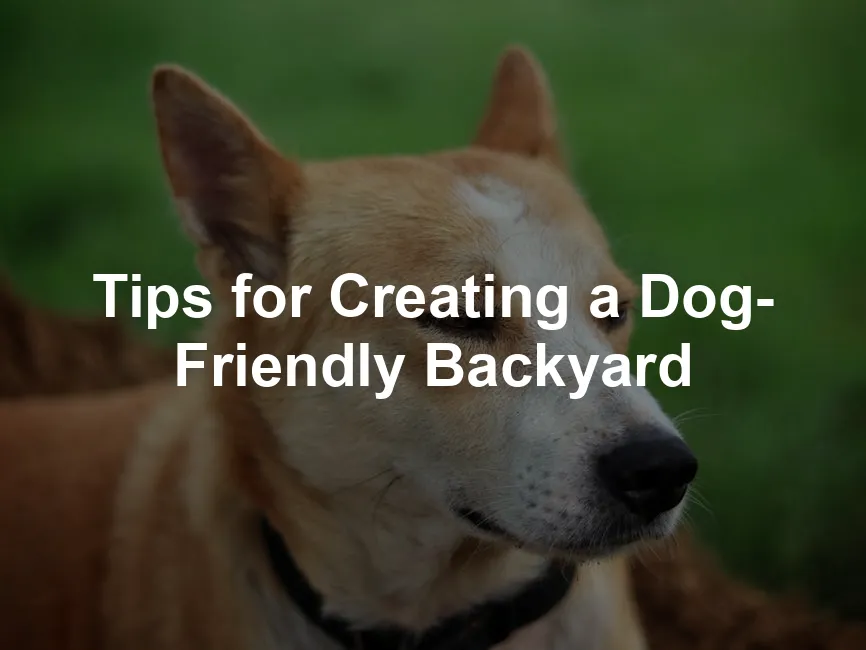Introduction
Creating a dog-friendly backyard is essential for the happiness of both dogs and their owners. Imagine a space where your furry friend can frolic freely, while you sip your iced tea in peace. It’s all about striking the right balance between aesthetic appeal and a safe environment for your pet. A well-designed outdoor area not only enhances your home but also provides a haven for your dog to play, explore, and relax.
In this article, you’ll discover practical tips to transform your backyard into a canine paradise. From ensuring safety with proper fencing to choosing the right ground cover, we’ll cover everything you need to know. Get ready to create an outdoor space that’s both functional and fun for your four-legged family member!
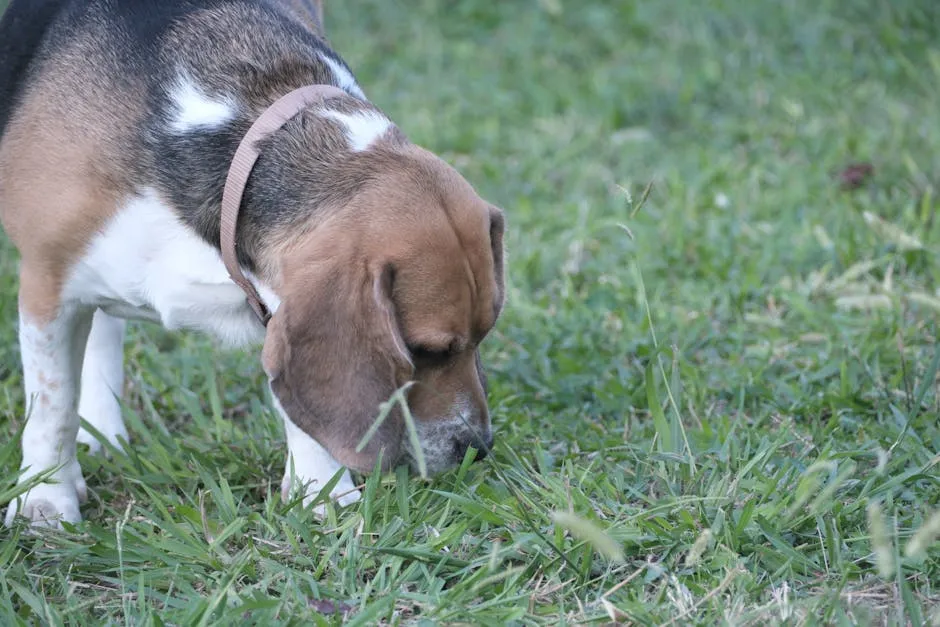
1. Safety First: Fencing and Boundaries
1.1 Importance of Fencing
A secure fence is the backbone of any dog-friendly yard. It keeps your playful pup safe from wandering off and prevents unwanted visitors (like that pesky neighborhood cat) from entering your space. A good fence should be tall enough to deter jumpers and sturdy enough to withstand the most determined diggers.
There are several types of fences to consider. Wooden fences offer a classic look, but they require maintenance. Vinyl fences are low-maintenance and durable, while chain link provides visibility without obstructing the view. Each type has its pros and cons, so choose what fits your style and your dog’s personality best.
Don’t forget about the bottom of the fence! Make sure it’s buried deep enough to prevent your pooch from digging under. A solid fence not only protects your dog but also gives you peace of mind.
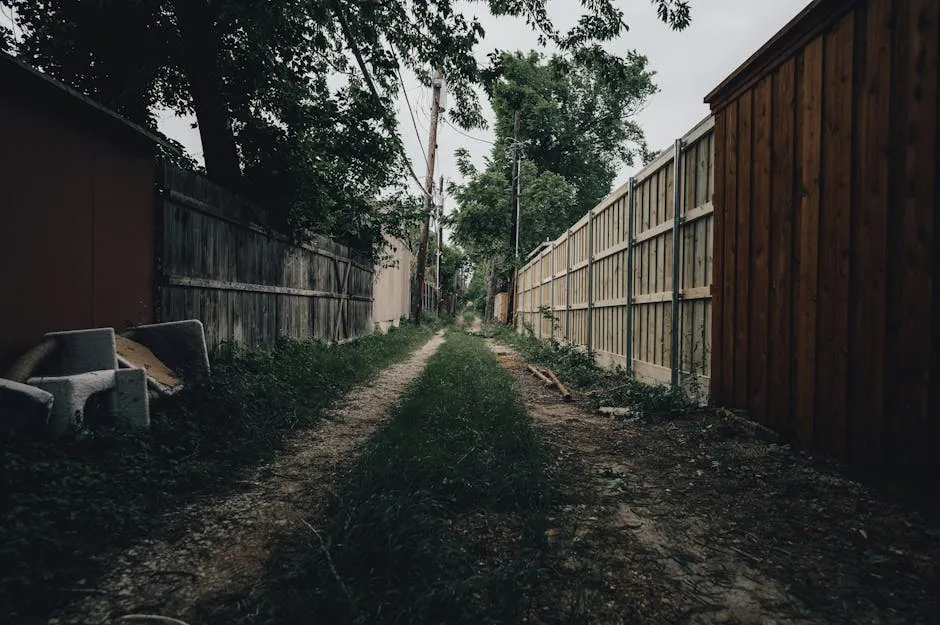
1.2 Virtual Fencing Options
If a physical fence isn’t feasible, consider virtual fencing. This high-tech solution uses GPS to create an invisible boundary for your dog. When your furry friend approaches the limit, they receive a gentle warning. If they continue, a mild static correction follows.
While virtual fencing can be more affordable and easier to install, it does have its limitations. It may not work well for all dogs, especially those with a stubborn streak. Additionally, it requires regular maintenance and supervision. Weigh your options carefully to ensure your dog’s safety and comfort.
In conclusion, whether you opt for traditional fencing or a modern virtual solution, securing your backyard is crucial for a happy and safe environment for your beloved canine companion. For ultimate peace of mind, check out the PetSafe Wireless Pet Containment System. It’s a reliable way to keep your dog safe while also giving them the freedom to roam.

2. Choosing the Right Ground Cover
2.1 Durable Grass Alternatives
When it comes to creating a dog-friendly backyard, grass selection is key. Some grass types stand up better to the wear and tear caused by our furry friends. Two strong contenders are Bermudagrass and Kentucky Bluegrass. Bermudagrass is tough, perfect for high-traffic areas. It recovers quickly from damage, making it ideal for zooming dogs. Kentucky Bluegrass, on the other hand, offers a lush, soft surface. It’s great for dogs, but it may need more care, especially in extreme heat.
Now, let’s talk about artificial turf. This option has its pros and cons. It’s low maintenance, so your weekends can be spent lounging instead of mowing. Plus, no more unsightly yellow spots! However, it can heat up under the sun, so consider placing a shaded area nearby. Also, be mindful of the environmental impact. While it conserves water, disposal issues arise when it’s time to replace it. Weigh these aspects before making a decision.

2.2 Dog-Friendly Ground Cover Options
If traditional grass isn’t your thing, there are fun alternatives! Clover is a fantastic option. It’s safe for dogs to munch on and requires less water than grass. Plus, it’s tough enough to resist those excited paws. Another option is moss, which is soft and low-maintenance. It thrives in shady areas, perfect for those spots where grass struggles.
For a more artistic touch, consider durable ground cover plants like creeping thyme. It’s not only hardy but also gives your yard a lovely scent. Cost-wise, these alternatives can vary. Clover generally runs about $4 per 4,000 square feet, while moss can be priced higher depending on the variety.
In terms of aesthetics, these options bring character to your yard. Imagine a lush clover patch or a fragrant thyme walkway! They create an inviting space for both you and your pup. So, whether you opt for tough grass or colorful ground cover, remember to keep your dog’s needs in mind!
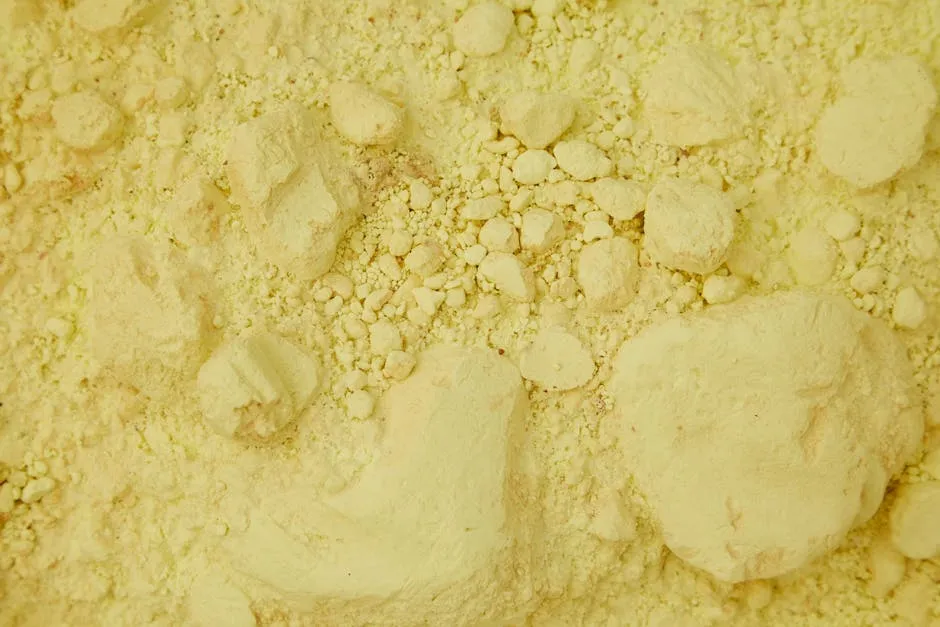
2.3 Creating Patrol Paths
Dogs are creatures of habit. They love to roam and explore their territory. Unfortunately, this can lead to the destruction of your beautiful lawn. Enter patrol paths! These designated routes minimize lawn damage by encouraging your pup to stick to specific paths instead of trampling your grass.
Creating patrol paths can be as simple as laying down pavers or mulch. Pavers are sturdy and easy to clean. They create a clear path for your dog to follow, reducing muddy paw prints in other areas. Plus, they come in various styles, so you can match them to your backyard aesthetic.
Alternatively, mulch is another great option. It cushions your dog’s paws and absorbs moisture, keeping things tidy. Cedar mulch also has natural flea-repelling properties, adding an extra layer of protection. Just avoid cocoa mulch, as it’s toxic to dogs. By using these materials, you can create comfortable and easy-to-maintain patrol paths for your furry friend. If you’re looking for high-quality mulch, check out Cedar Mulch 2 Cubic Feet to keep your yard looking great!

2.4 Flea-Repelling Gardens
Fleas can turn your dog’s outdoor adventures into itchy nightmares. Luckily, you can create a flea-repelling garden to keep those pesky pests at bay. Certain plants naturally repel fleas and other bugs, making your yard a safer haven for your furry friend.
Consider incorporating plants like marigolds, rosemary, and sage. Marigolds are colorful and cheerful, while rosemary and sage are fragrant herbs that add flavor to your cooking. Not only do these plants deter fleas, but they also beautify your garden.
Additionally, catnip is a fantastic option. It’s not only loved by cats, but it also repels fleas! Using these plants in your landscaping can create a natural barrier against fleas, ensuring your dog stays comfortable while enjoying their time outside. To help with flea control, consider using Zesty Paws Probiotic Chews for Dogs to support your dog’s health and keep fleas at bay!
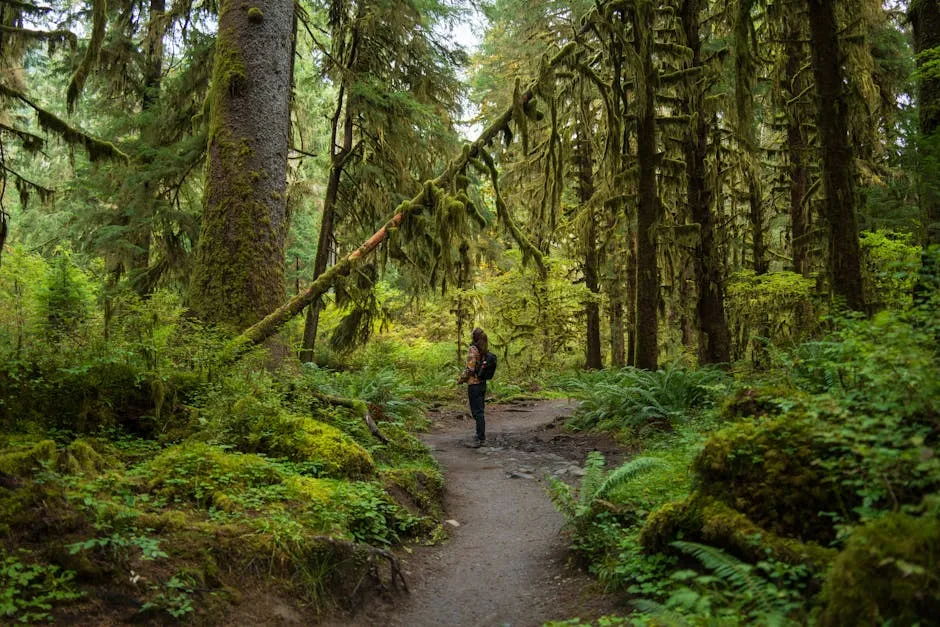
4. Providing Comfort: Shade and Water Features
4.1 Creating Shaded Areas
As the temperatures soar, it’s crucial to provide your dog with shaded areas to cool off. Dogs can suffer from heatstroke, and shade is your best friend on hot days.
Planting trees is an excellent way to create natural shade. Consider options like maples or oaks that provide ample coverage. If you’re looking for something more decorative, shade sails or awnings can also do the trick. They’re stylish and effective at blocking out the sun’s rays.
Don’t forget about doghouses! A well-ventilated doghouse provides a cozy retreat for your pup. It’s a perfect spot for napping or just escaping the heat. With these shaded solutions, your dog can lounge comfortably while keeping cool. For a great doghouse option, check out the PawHut Outdoor Dog House to keep your furry friend comfy!
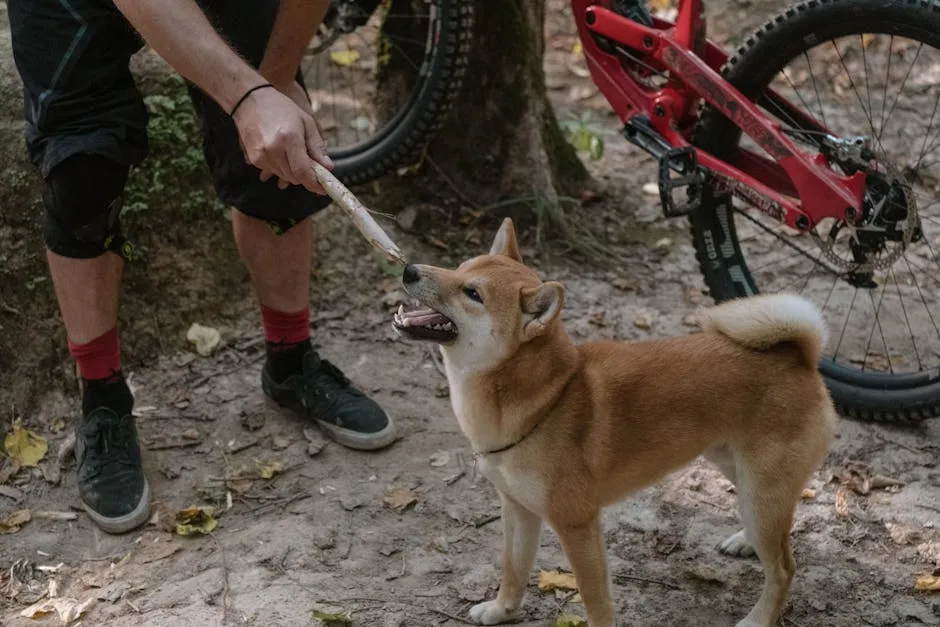
4.2 Water Features
Hydration is essential for your dog’s health, especially during hot days. Adding water features to your backyard can keep your canine companion refreshed and entertained.
Consider installing a small dog pool. It offers a fun way for your dog to cool off after playtime. If you’re short on space, a dog-friendly fountain can also work wonders. Choose one with gentle slopes for easy access, ensuring it’s safe for your pup. For an excellent option, check out the PetSafe Drinkwell Stainless Steel Pet Fountain for a stylish hydration solution!
Sprinklers are another option! Set them to go off at intervals, allowing your dog to run through the cool spray. Remember to keep these features clean. Regularly check for debris or stagnant water to maintain hygiene. A clean water feature will keep your dog happy and healthy while enjoying their outdoor space.
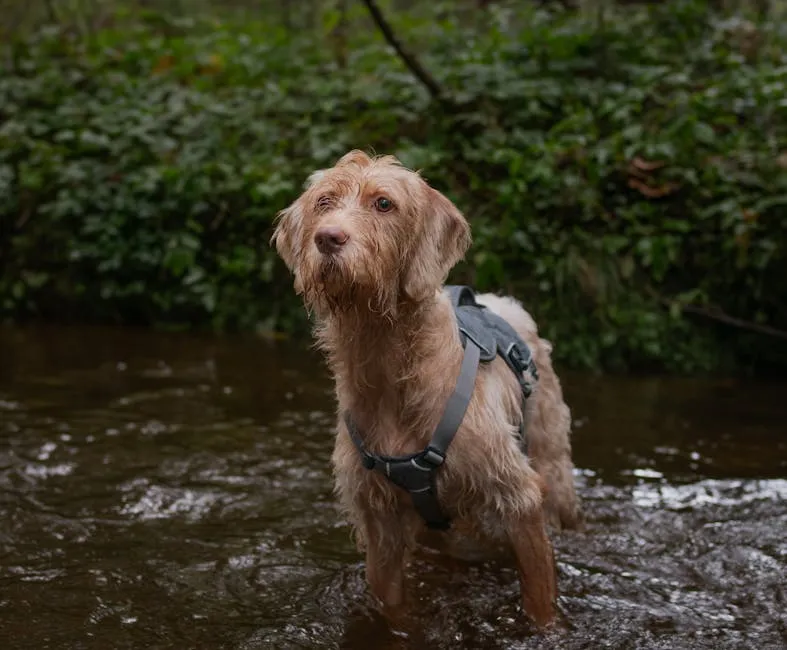
5. Play Areas and Activities
5.1 Designing Play Zones
Every dog deserves a space to play, rest, and enjoy life. Start by creating distinct areas within your backyard to cater to these needs. Consider establishing a designated play zone where your pup can romp and roll without worries. This area should be spacious enough for zoomies and games of fetch, ideally surrounded by a soft ground cover like clover or durable grass.
To spice up the fun, think about incorporating agility equipment. A tunnel or jump can turn a simple outing into an exciting challenge. Even basic items like cones can help create a mini obstacle course. This not only entertains your dog but also enhances their physical and mental skills. For a fantastic agility setup, check out the Dog Agility Training Equipment Set to keep your pup entertained!
Next up, we have the ultimate digging zone! Dogs love to dig, and rather than fighting this natural behavior, why not embrace it? Create a sandbox filled with sand or soft mulch. It’s a perfect spot for your furry friend to dig to their heart’s content while sparing your flower beds from destruction. Hide some toys in there to encourage exploration and play.
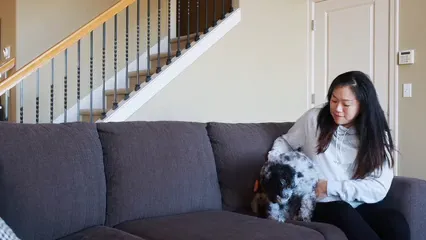
5.2 Interactive Features
To keep your dog engaged, consider adding interactive features to your backyard. Toys are an obvious choice, but think outside the box! Puzzle toys filled with treats can provide mental stimulation, keeping your dog occupied and happy. The Outward Hound Hide-A-Squirrel Puzzle Toy is a great choice for this!
Obstacle courses are another fantastic way to enhance engagement. From hopscotch-style jumps to weaving poles, these courses keep your dog active while also developing their coordination. You can even set up a simple agility course with homemade equipment, like jumps made from PVC pipes.
Water play is another excellent option. A kiddie pool can be a fantastic addition during hot summer days. Not only does it help your dog cool off, but it also offers a new avenue for fun. Just imagine your pup splashing around, chasing after toys in the water! For a great water toy, consider the KONG Classic Dog Toy to keep your pup entertained during playtime!
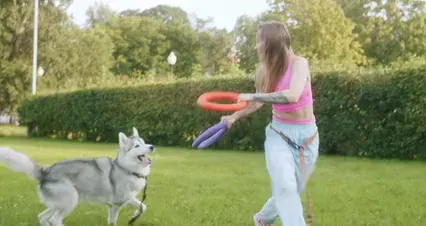
Lastly, remember that mental stimulation is just as important as physical activity. Incorporate games that challenge your dog’s brain, like hide-and-seek with their favorite toy. This encourages problem-solving and keeps them mentally sharp. Balancing physical and mental activities will lead to a happier, healthier dog.
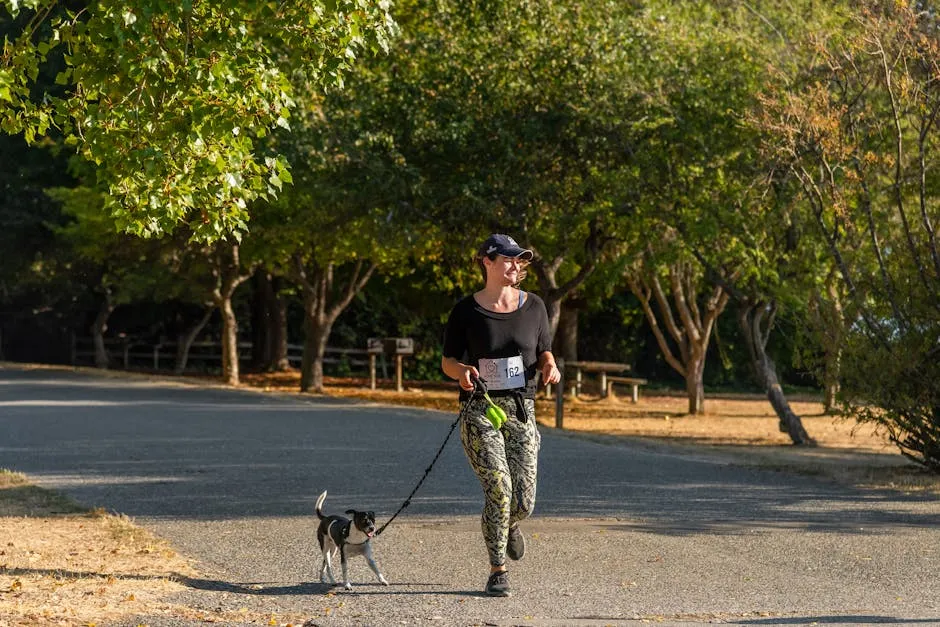
6. Maintenance Tips for a Dog-Friendly Yard
6.1 Routine Care
Maintaining a dog-friendly yard requires regular attention. One crucial task is cleaning up after your dog promptly. Waste left unattended can lead to unpleasant odors and attract pests. Make it a routine to pick up after your furry friend daily, keeping your yard fresh and inviting.
Another aspect to consider is dealing with lawn damage caused by urine. Dog urine can create unsightly brown patches. To combat this, water the area immediately after your dog relieves themselves. This dilutes the nitrogen and minimizes damage. Alternatively, train your dog to use a designated potty area, making it easier to manage potential lawn issues.
For those persistent spots, consider reseeding or using a patch repair kit specifically designed for dog-damaged areas. This will help restore your lawn’s beauty, ensuring a green and healthy space for both you and your pup to enjoy. If you need a good patch repair kit, check out the PetSafe ScoopFree Ultra Self-Cleaning Litter Box for easy maintenance!
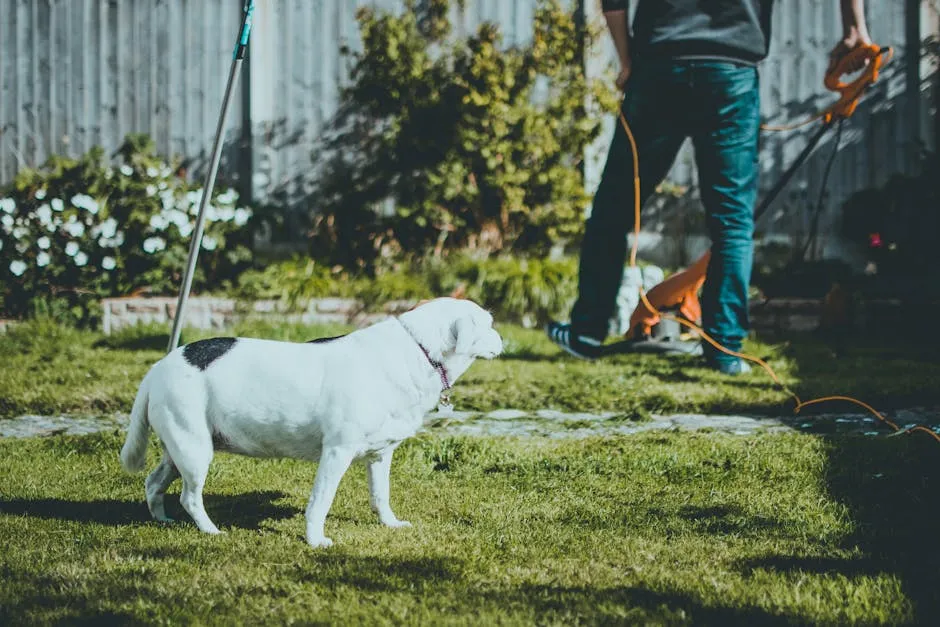
6.2 Chemical-Free Gardening
Gardening doesn’t have to be a turf war between your plants and your pup. Using pet-safe fertilizers and pest control methods is crucial for a harmonious backyard environment. After all, your dog’s safety should be a top priority.
Many conventional gardening products contain harmful chemicals that can be toxic to pets. Imagine your dog having a sniff-fest in the garden only to ingest something that could make them sick. Yikes! To avoid such a scenario, it’s best to choose natural alternatives that keep your garden flourishing while keeping your furry friend safe.
So, what are those magical natural options? For fertilizers, consider compost or well-rotted manure. These organic choices enrich your soil without the risk of toxicity. Plus, they’re great for the environment. When it comes to pest control, think about using diatomaceous earth or neem oil. Both are effective in repelling unwanted critters while being safe for your pets.
By making these simple switches, you can create a vibrant garden that’s safe for your four-legged companions. Pet-safe gardening is all about keeping things green and clean, ensuring your backyard is a paradise for both your plants and your pup!
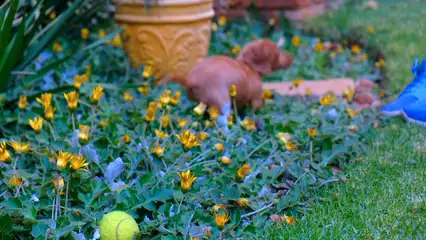
FAQs
What types of grass are best for dog owners?
When it comes to selecting grass for your dog-friendly yard, durability is key. Bermudagrass and Kentucky Bluegrass are excellent choices. Bermudagrass withstands heavy traffic and recovers quickly, making it ideal for playful pups. Kentucky Bluegrass, known for its softness, is also resilient but requires a bit more care in hot weather. If you’re considering alternatives, clover is a fantastic option. It’s safe for dogs, requires less water, and is tough enough to handle romps. Just remember to avoid grasses that are overly delicate, as they won’t hold up against those enthusiastic zoomies!
Are there plants I should avoid in a dog-friendly garden?
Absolutely! Some plants are toxic to dogs and should be avoided at all costs. Common culprits include azaleas, lilies, and sago palms. Ingesting these plants can lead to serious health issues, including vomiting and even more severe reactions. Always consult a comprehensive list, like the one from the ASPCA, to ensure your garden is safe for your furry friend.
How can I prevent my dog from digging in the yard?
To curb digging behavior, consider creating a designated digging area filled with sand or soft soil. Encourage your dog to use this spot by hiding toys or treats in it. Additionally, providing plenty of exercise and mental stimulation can redirect their energy away from your flower beds. If your dog digs in specific areas, try placing large rocks or barriers to deter them. Consistency is key; with patience, your pup can learn where it’s okay to dig.
What features can help keep my dog cool in the summer?
Keeping your dog cool during the summer months is essential. Create shaded areas using trees or awnings where they can escape the sun. Consider adding a kiddie pool for a refreshing splash, or a dog-friendly fountain that offers both hydration and fun. Also, provide plenty of fresh water throughout the day. Keeping your dog comfortable ensures they’ll enjoy their outdoor time without overheating!
How can I manage dog urine spots on my lawn?
Dog urine can leave unsightly brown spots on your lawn, but there are ways to manage this issue. A simple trick is to water the area immediately after your dog relieves themselves. This dilutes the nitrogen and minimizes damage. Alternatively, you can train your dog to use a designated potty area. This keeps the rest of the yard looking lush and green. If spots do appear, consider reseeding or using a patch repair kit designed for dog-damaged areas. With a little effort, you can maintain a beautiful lawn that stands up to your pup’s antics!
Please let us know what you think about our content by leaving a comment down below!
Thank you for reading till here 🙂
For more tips on creating a pet-friendly outdoor space, check out our article on dog-friendly backyard.
All images from Pexels

